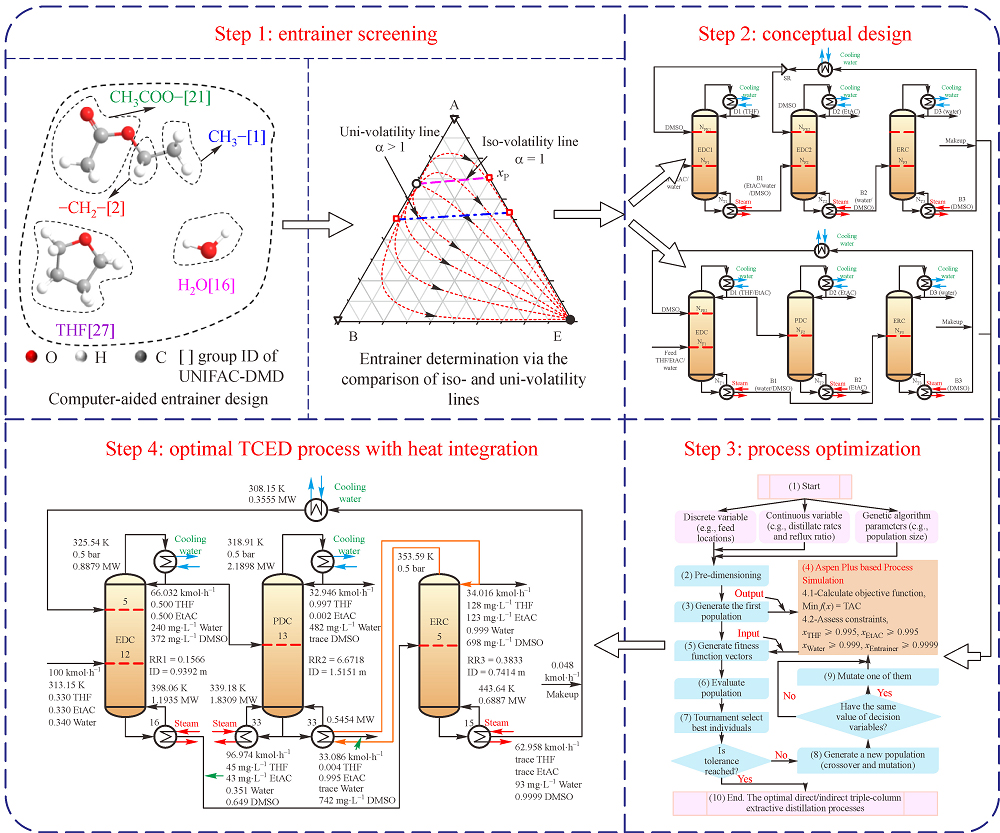The selection of entrainer plays a key role in designing the energy-saving ED processes [
21,
22]. Cui et al. [
23] studied the separation performance of two different entrainers via phase diagram analysis and they found that ethylene glycol is more suitable for the separation of benzene/isopropanol/water by ED. Zhu et al. [
24] developed a heuristic method employing the relative volatility to determine the optimal solvent with the best economic performance. Shen et al. [
25] proposed a solvent selection approach employing five properties (i.e., relative volatility, solubility power, molecular weight, melting point and boiling point) as objectives to screen the best entrainer. Blahušiak et al. [
26] developed another quick calculation procedure for the preselection of solvents by considering the minimum energy consumption and solvent-to-feed ratio. The efficiency and reliability of this method were successfully verified via several industrial application cases. Unfortunately, these previous works all considered a limited, pre-specified solvents and tried to find the best candidate from these solvents. In comparison with the previous solvent screening methods, the computer-aided molecular design (CAMD) method developed by Gani and Brignole [
27] attempts to rationally design the most suitable solvents [
28–
33] from a list of molecular building groups. Recently, Zhou et al. [
34] proposed a multi-objective CAMD approach to design solvents for the separation of binary azeotropic mixture
n-hexane/methanol. In the present work, we use this method to find potential entrainers for the ternary azeotropic system THF/EtAC/water. Subsequently, thermodynamic insights are employed to further determine the best entrainer for the ED process.













